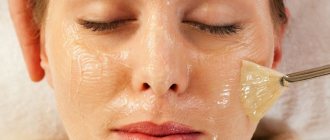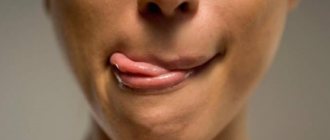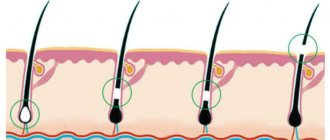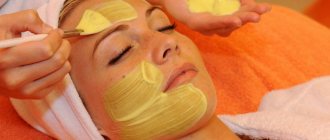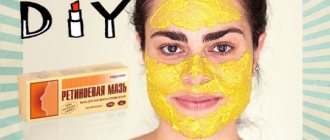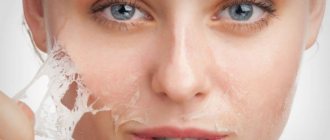To create an interesting image for a masquerade or Halloween, pranking relatives and friends, or other purposes, sometimes it is necessary to create a black eye.
This can be done artificially with makeup or unsafely with force.
When choosing a method, it is recommended to think about the consequences and choose makeup - it is safe, easy to erase, and there is no need to then look for methods to solve the problem, concussion, injuries and other unpleasant consequences.
Why is it necessary to draw bruises?
The reasons for such a “drastic” change in appearance can be very different. The main thing is not to overplay and achieve what you want. You can deceive anyone with an unusual appearance, but you shouldn’t go to the doctor with artificial black eyes. More often than others, the goal is to get dark circles under the eyes from lack of sleep, but there are other options:
- create a sickly appearance;
- show that fatigue has set in;
- manipulate your appearance according to the current situation;
- prepare for an unusual masquerade or Halloween;
- imitate grief, sadness, melancholy.
If there is a need to make bruises under the eyes, then the imitation must be skillful so that the appearance looks natural. This advice does not apply to holidays where large amounts of makeup or glitter will be required.
Drug addict behavior
The use of psychoactive substances affects the behavior of the drug addict not only at the time of drug intoxication. Often a person experiences constant stress, wanting to hide the fact of addiction, and thinking about how to get money to get the next dose.
Let's highlight several behavioral signs of drug addiction:
- The drug addict seeks to hide from his surroundings and often wants to be alone;
- Moral stress and withdrawal symptoms lead to a frequent desire to smoke. If a person has significantly increased the number of cigarettes they smoke per day, or previously had no nicotine addiction at all, they should be wary;
- Unstable emotional background of a person with addiction: a depressive state is replaced by aggression or euphoria;
- The addict takes things out of the house, looking for all available ways to make quick money;
- A person tries to hide personal belongings from others, wears shirts and sweaters with long sleeves in order to hide traces of injections.
You can suspect addiction based on other signs, which we will discuss later.
Leave a request for a free consultation with a specialist
We will contact you as soon as possible
- — Anonymous
- - For free
- — Around the clock
Drug addict sniffles
Often, sniffing and rubbing the nose is a consequence of the use of “snorting” drugs. This can be amphetamine, cocaine, heroin and synthetic mixtures. Over time, erosions and other “sores” appear on the mucous membranes and around the nose.
Constantly smiling
Unreasonable and frequent smiling may be a consequence of euphoria due to drug use. You should pay attention to other features of a person's behavior to discover the root cause of strange behavior.
The gait of a drug addict
In a state of intoxication, the addict’s legs give way, his gait looks difficult and uncertain. The drug addict falls or staggers, and may dance. Springy movements and strange and extensive waving of the arms are often noticeable.
Why do drug addicts itch?
One of the symptoms of drug addiction is scratching of the face, neck and limbs. In a state of intoxication, sensory hallucinations occur: a person thinks that insects are moving under his skin. Hallucinations may take another form, but as a result, unbearable itching occurs, most often in the face and neck.
DETOXIFICATION
Tips for a Natural Look
Only naturalness will help mislead anyone and make them believe that something really happened to the owner of the blue-rimmed eyes. How to look natural and deceive others? We offer some simple tips:
- The makeup should imitate a real bruise, and bleeding during its formation occurs between the nose, cheekbone and eye. It is important to place the “bluish” tones in the right place.
- You should also add paint above the eye: if there is a bruise, this area is also injured. Bruises from lack of sleep appear only under the eyes and should not be too darkened.
- The amount of paint should be small. It must be carefully shaded, otherwise the makeup will reveal its artificial origin.
- For realism, matte pencils and shadows are recommended. Glossy options or the presence of sparkles are a carnival option.
If there is a great need to create bruises, you should not injure yourself on purpose by hitting corners, doorposts or chairs. No need to force your friends to give you a real bruise. The consequences of the injury can be minor or cause serious damage to vision.
How the procedure works
The specialist cleanses the skin and then applies an antiseptic. Since the procedure is somewhat painful, after treatment, an anesthetic gel based on lidocaine is applied to the skin. The gel begins to act after 15 minutes. As soon as the product has taken effect, the cosmetologist injects fillers, making injections in several places with microneedles, trying to distribute the substance as evenly as possible. Then the specialist does a small massage, somewhat similar to a facial massage with spoons, as if distributing the substance under the eyes. Immediately after the procedure, you may feel slight pain and slight swelling as a result of mechanical damage to the skin. You can tell about the results in two weeks.
Simple ways
If you need to quickly fake dark circles under your eyes, there are several simple options that won’t take much time. One of them is the use of chalk and foil. The place of the black eye is painted with chalk. The foil is crumpled into balls and gently rubbed over the area of the future bruise. The primitive imitation is ready.
Take a little rich cream and apply it to the area around the eyes. Then this place is rubbed with a silver ring. The resulting gray stains are given the shape of a bruise or create dark circles under the eyes, suggesting prolonged lack of sleep or fatigue.
Alternatively, match sulfur heads are used, which are removed from the matches to create sulfur powder. Rub it on the area chosen for the blow under the eye. The bruise will not appear immediately, but it will last a long time and look quite realistic, not much different from a small hematoma.
A bruise with streaks can be obtained in a few seconds using iodine and shadows. A cotton swab is moistened with iodine and a brown outline of the future “black eye” is created. Blue shadows are applied on top. It turns out to be a very realistic image.
A strange but effective method of creating a bluish halo is the use of aluminum spoons. Take two spoons and rub them against each other for a while. After working for a minute, wipe the desired area with a spoon where there should be darkening. The bruises look very real.
It’s even simpler - use a simple pencil lead, which is ground into powder. The gray mixture is applied to a sheet of paper and shaded at the site of the intended impact. Get the desired picture.
Every woman has a lot of cosmetics in her arsenal, which are always with her - in her treasured cosmetic bag. With the help of powder and shadows, you can not only correct your appearance, but create the desired image. The main thing is to have several shades of shadows available: purple, blue and powder with a yellow tint.
Care for minor injuries
The patient can often self-treat nail damage at home:
- remove gel polish from damaged nail;
- Gently wash the affected area with fragrance-free soap;
- dressing the wound if there is an open injury;
- immediately after injury - applying cold (ice) for about 20 minutes at a time;
- raise the injured leg above body level;
- application of gentle compression (until hematoma forms);
- taking over-the-counter pain medications as directed.
How to draw with eye shadow and eyeliner
To create a more believable image based on a specific situation, it will take a little more effort. The appearance should not only be believable, but also evoke emotions: sympathy, pity, understanding or regret. You need to imagine what kind of reaction you would like to see from your interlocutor or interlocutor.
Having prepared a palette of shadows and a black (gray) eyeliner pencil, we carry out a series of sequential actions:
- Rinse and dry the delicate skin around your eyes to avoid irritation later.
- Using a soft pencil, create an outline around the area where the bruise should be located, covering the upper and lower eyelid area. If you plan to create bruises from lack of sleep, then the lower contour is sufficient. When you want to amaze your friends with a real hematoma, then a halo around one eye is enough.
- Wrap a soft cloth around your finger and gently blend the outline, creating a grayish tint. The color should be soft, not sharp. Shade the edge zones with lighter tones.
- Use matte purple eyeshadow to add strokes to the corners of your eyes and lower lid area for added impact.
- Then use dark red lipstick to depict the scratch where the blood oozed out. This could be the corner of the eye where the tear glands pass or the top of the cheekbone.
- Shades of greenish and marsh tones are the final chord in creating an imitation bruise. They are applied to the cheekbones and outer corners of the eyes.
If it is necessary to create the illusion of a hematoma, then a punch is usually applied under one eye. Having both eyes painted will cause a strong reaction from others. It can be assumed that he had to be attacked by a maniac or sadist.
Unless it's a carnival or fancy holiday, the illusion of a bruise needs to look believable to be credible. People should not doubt that you suffered at the hands of a jealous husband or were exhausted from prolonged lack of sleep while doing a difficult job or going through a difficult event.
Bruises under the eyes and the reasons for their appearance
Note! Hematomas, regardless of a person’s age, can appear with the following diseases:
- chronic infectious diseases;
- helminthiases;
- endocrine disorders (including diabetes);
- lack of vitamins;
- disorders of the kidneys and liver;
- metabolic problems;
- diseases of the heart and vascular system;
- dermatological diseases;
- disorder of the pancreas.
Sometimes bruises appear even in the absence of diseases.
This is facilitated by the stress and emotional turmoil experienced by a person, alcohol and smoking abuse, disruption of the daily routine and concomitant lack of sleep, lack of rest in general and overstrain of the visual organs.
How to make a bruise using foil
To make a bruise using foil, you need not only it, but also a piece of white chalk. The latter can be bought in a store that has everything for creativity, or you can use one that is intended for application to walls when decorating. And the foil is suitable for chocolate, but silver, not golden, or made for baking in the oven.
You need to imitate a bruise in the following sequence:
- Wash the skin in this area with soap to make it dry, and dry well with a towel.
- Crumple a piece of foil; it should turn into a lump with rather sharp, scratchy edges.
- Rub the skin with chalk so that the white coating is clearly visible on it.
- Treat the same place with foil in the same way.
A drawn hematoma will look fresh, but if handled carelessly it will quickly wear off.
Paints and sponge
This option is the most difficult, however, the bruise turns out to be as similar as possible to the real one. To do this, you need to purchase yellow, black, burgundy and blue paints, brushes and a sponge from a specialized store.
Such a bruise is drawn in several stages:
- First, you need to accurately determine the shape and size of the desired bruise.
- After the size has been chosen, the center of the future bruise should be painted with blue paint, carefully shading it with light movements.
- Next you need to apply yellow paint. It is advisable to start applying it from the edges.
- After yellow, you can take on burgundy. It is added directly to the center of the hematoma, where blue dye is already present.
- If you need a rich dark shade, you can add a little black; if you need pinpoint hemorrhages, you should also use red paint.

